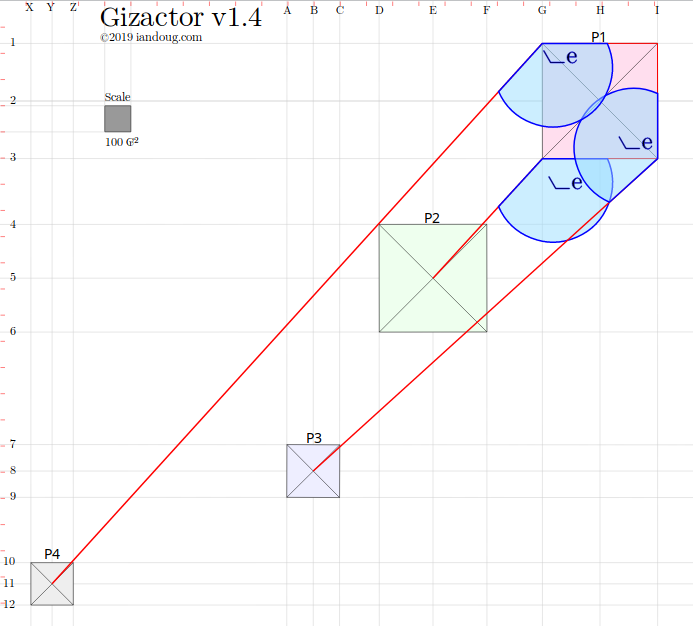The fine structure constant is described as one of the most fundamental physical constants. I don’t pretend to understand anything about it apart from its value, which is close to 1/137. We’ve only been using it for around 100 years.
So the fact that the Khafre pyramid uses 137 as a size multiplier (base is 3 x 137, height is 2 x 137) is annoying, especially since the Khufu pyramid references the speed of light in metres per second, twice. The ancient Egyptians are not supposed to know those things.
Since the fine structure constant itself is a messy decimal number (0.0072973525693…) it is usually referenced via its inverse, as 1/137, which provides a reasonable approximation.
However there have been attempts to find a better approximation, and Scott Onstott has a page with some approximations. Which naturally was a challenge I could not resist….
So I saw that one of the better ones was based on 137²+π²…. and since the royal cubit is π/6, and I have lots of approximations for that, it was simply a matter of finding the right one that produced a better result. That turned out to be based on the plastic number… so without further fanfare, here we are:
\frac{1}{\alpha} \approx \sqrt{{137^{2} + (\frac{\rho^{9}}{4}})^{2}}
The WolframAlpha version of the formula is √(137² + ((plastic number^9)/4)²), which produces
137.0359992970725102075551820936909082242952278384186387671
We can check the percentage accuracy as well:
100/137.0359992970725102075551820936909082242952278384186387671 / (fine structure constant)
produces 99.9999998% accurate. Not bad.

